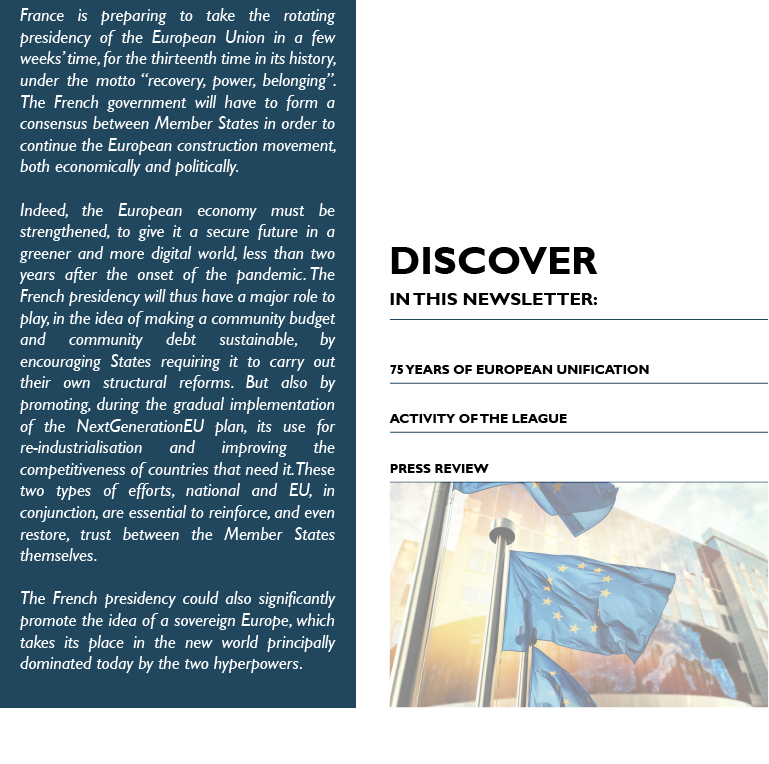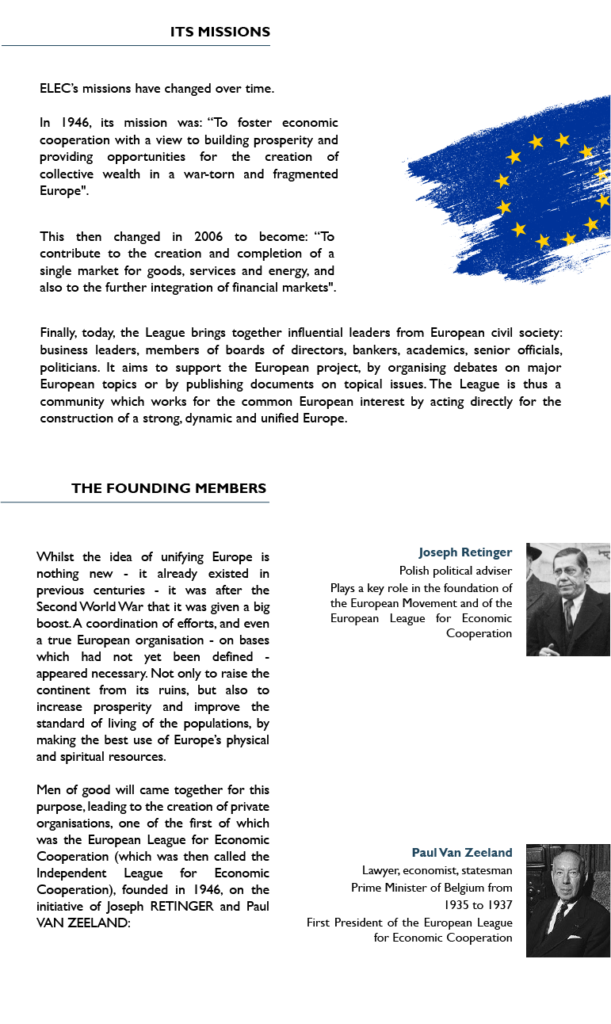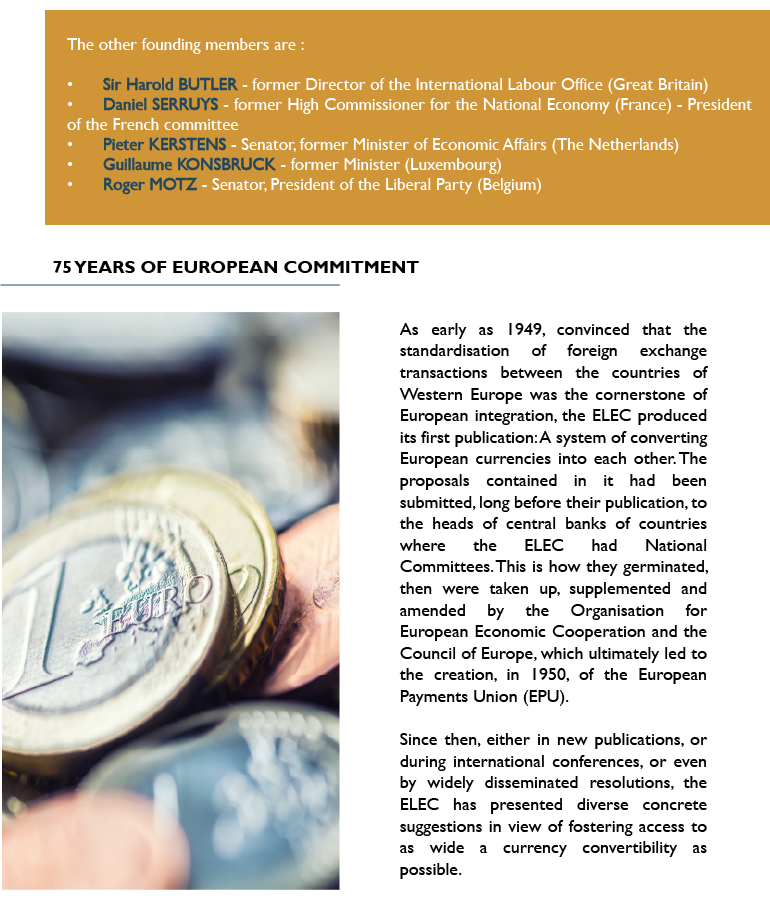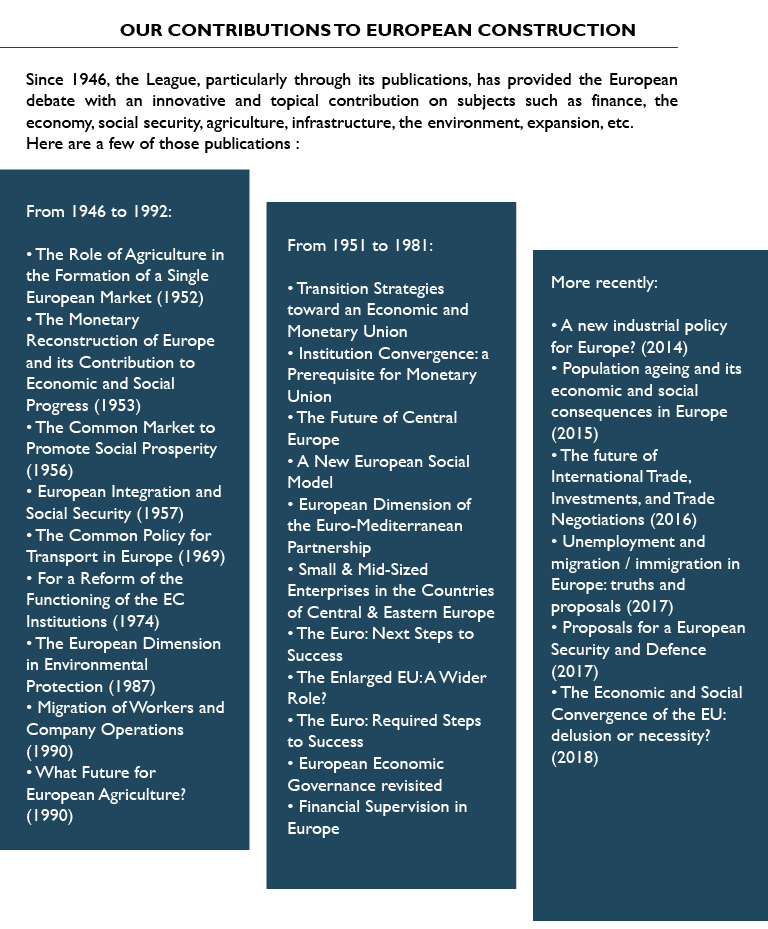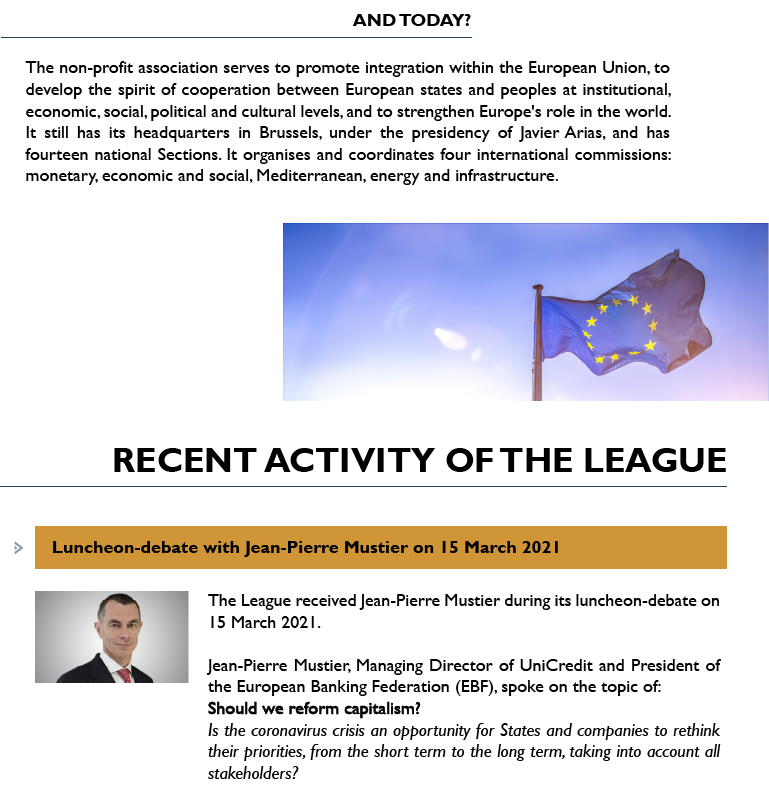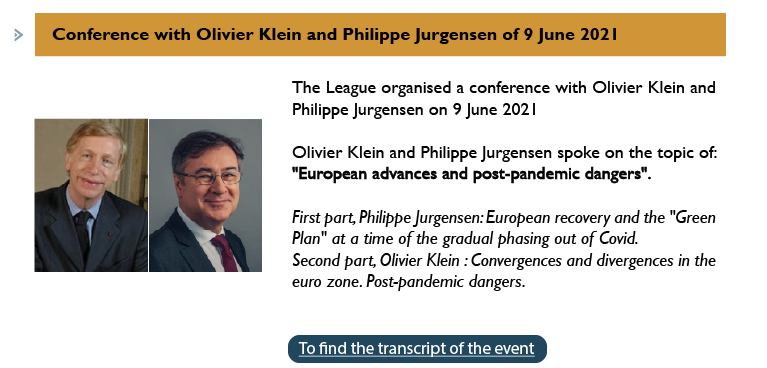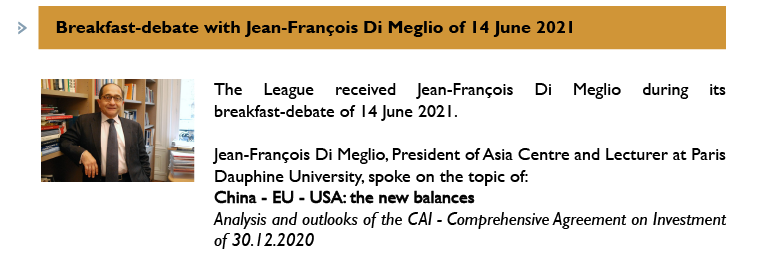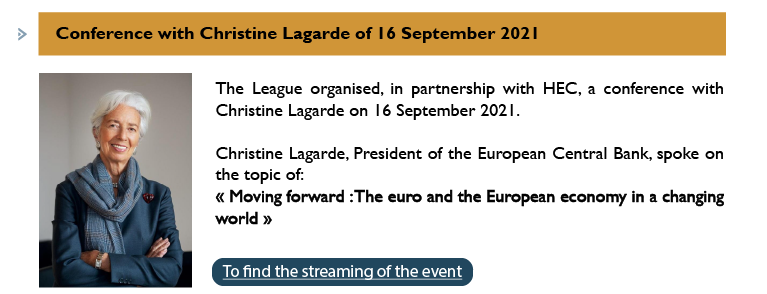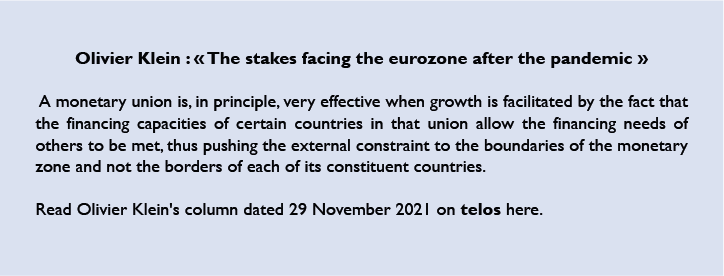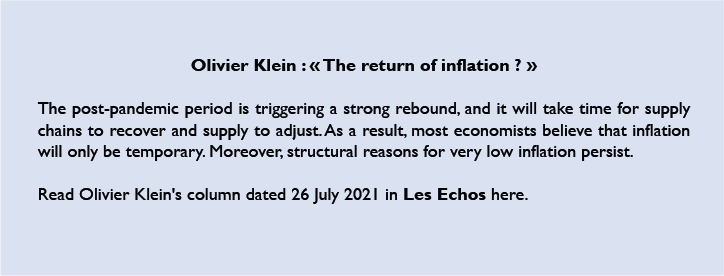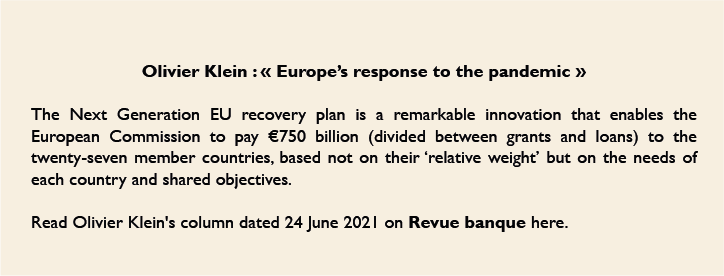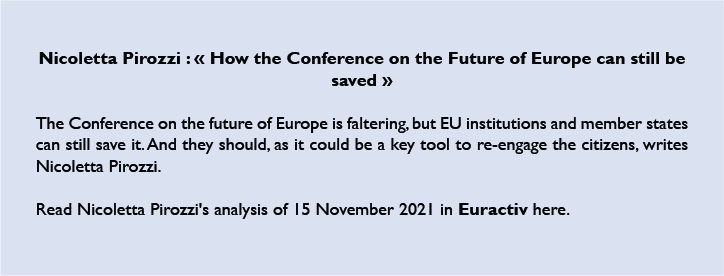Should interest rates be lower than the growth rate for the long term, implying that debt is not important? This is not my thesis and I believe that central banks will initiate or continue a gradual increase in their rates. What will be the possible and relevant reactions for any government with a high level of debt?
Before the very recent war in Ukraine, growth was strong, even if it fell slightly in view of the slow return to a more normal growth rate after the 2021 rebound. Monetary policy was therefore expected to be at least normalised, smoothly due to the high overall debt and highly valued financial and real estate markets, by gradually exiting the quantitative easing policy, as well as by cautiously raising interest rates. This need for tightening came from the risk of overheating. But also from the risk of monetary policy being exhausted in the event of new (and there are always) future crises. Finally, from the development of bubbles due to interest rates that have been too low for too long compared to growth rates.
Then, several months ago, there was an upsurge in inflation. It was clear that part of this inflation was not transitory and that we were probably changing inflationary regime. The Fed, then the ECB, were therefore prompted to accelerate their announcement of a gradual end to their net securities purchases on the markets. They also said they would raise their rates a little faster than expected. For the same reasons as described above, however, the issue was still not to proceed too quickly in exiting their very accommodative policy. Moreover, the ECB had to deal with the more specific and difficult eurozone issue, due to the large imbalances between the countries of the South and the North.
At the same time, governments had, and still have, a need for investment for the development of new technologies, re-industrialisation (even partial) and the energy transition. There was therefore a conflict between, on the one hand, the objective of financial stability undermined by interest rates that have been too low for too long and now the fight against inflation and, on the other hand, the objective of financing the necessary new investments and the solvency of governments, or even private players, whose debt had increased sharply since 2000 for the private sector and since 2007 for the public sector, with in addition a significant increase in public debt due to the pandemic.
Hence, the raising of several voices in the eurozone. The first stating the need to change the common budgetary rules, by excluding investment budgets from the calculation of constraints on public deficits. This proposal is sometimes coupled with the idea that, under current circumstances, the level of public debt was of little importance, and that the central banks would continue to finance future deficits for a long time. Another voice showed a narrower path, but it seems to me much more credible, certainly explaining the need to change the eurozone’s common rules, which are dated and ineffective, but at the same time stressed the importance of the compromises to be found between the countries of the North and the South on these changes in rules so as to select as candidates for exclusion only investments that actually generate potential growth or facilitate the energy transition. All expenses not always resulting in more potential growth. And the improvement in growth potential not always requiring additional spending. It was also crucial, from this point of view, to agree on reasonable budgetary rules, preventing any “free rider” behaviour.
The spectre of stagflation
Today, the war situation has created the spectre of stagflation. Therefore of a slowdown in growth which will be at least 1% and inflation even stronger than expected before the start of the war. This will create an even more intense dilemma for central banks. However, if the very sharp upsurge in inflation were to lead to no reaction or a very weak reaction on their part, a major risk of an inflation spiral could arise. Today, the question of whether there will be a second round of inflation no longer arises. Many industrialists and large retailers are increasing their prices, otherwise they are no longer able to cope with rising costs. And many companies have begun to raise their wages. They cannot act otherwise, in order to retain their skills, as well as to be able to recruit. The upcoming wage negotiations will reinforce this phenomenon.
However, if inflation takes hold through price-to-price, wage-to-price and price-to-wage indexation, with slower growth, we will enter a potentially lasting stagflationary dynamic. When Volcker, then Fed Chairman, tried to exit a long stagflation, in 1979, he had to provoke a deep recession in order to break the indexation phenomena. Ignoring inflation would also be very dangerous in terms of inequality, because no one is equal, neither among employees nor among companies, in the face of the ability to pass on any price increases in their incomes. Moreover, there is a need to fear inflation that could be transformed into a system of hyperinflation, causing economic agents to lose their bearings. Stable and low inflation allows for viable wage agreements; reliable price catalogues between producers, distributors and consumers; loan agreements to set interest rates between borrowers and lenders based on shared inflation expectations. In short, stable and sufficiently low inflation is essential to confidence. However, it is necessary for an efficient economy. Monetary policy must therefore react in a timely manner. If it were not to do so, it would have to act later by taking much more risk. Central banks must remain credible. By supporting growth, of course, but clearly by combating inflation. Uncontrolled inflation also undermines growth itself.
This path will be very narrow
This path will be very narrow. The monetary tightening policy must therefore necessarily be very cautious, and therefore very gradual. As a result, this trajectory will also require governments to play their part. On the one hand, governments will have to make the aforementioned necessary investments, generators of potential growth and, on the other hand, reduce unnecessary expenditure or reallocate it usefully. France has had the highest public expenditure as a percentage of GDP in the eurozone for a long time, but in some areas this expenditure has, in recent decades, provided a quality that bears little relation to the level of expenditure incurred. The OECD’s many comparative measures testify to this on a regular basis. Thus, the effort must not be only financial. The essential investments can therefore only be made if the essential reforms are carried out. Such as the reform of retirement – which while reducing the public deficit – supports potential growth because it increases the population available for work, whereas currently France is one of the countries with the significantly lowest employment rate after the age of 60.
All in all, it is imperative that central banks neutralise, at least, but cautiously, their monetary policy, in order to combat too much inflation, as well as to avoid financial instability due to bubbles that would continue to develop. And, at the same time, it is essential that governments increase potential growth through investment and reform and ensure better control of spending. In order to give credible trajectories to their fiscal policy and ensure their solvency in a world where interest rates will be structurally rising.
On 16 March this year, the Fed increased its intervention rate by 25 cents and indicated that there would be numerous hikes in the future. The following day, the ECB, in turn, announced an end to its net securities purchases at the end of June and paved the way to subsequent rate hikes. Furthermore, if the ECB did not perform such a policy change, the euro would continue to depreciate against the dollar in particular, leading to even higher inflation, due to the rise in prices in euros of imported products. The trend therefore seems to be underway.
The idea of a “war economy”, war against climate change, war for re-industrialisation, as well as a military war, as begins to be mentioned here and there among some economists – if it led to the belief that debt was of no importance and that the central banks would be obliged to finance any new deficit thus allowing very sustainable spending without constraints – could lead to a disaster. This concept of war economy, as previously stated, inevitably leads to the idea of a very long period of time. Unlike a “whatever it costs”, limited to the duration of the pandemic. However, this idea includes an unthinkable: money. Money is the foundation of the debt settlement system. Having confidence in money means having confidence in the effectiveness of the debt settlement system. Therefore, if ever the monetary constraint[1] were suspended for too long, then confidence in money could be called into question. And if we no longer had confidence in money, we could experience, not traditional inflation, but a flight from money. If the central banks were to never stop quantitative easing and endlessly keep rates too low relative to the growth rate, not only would there be regular serious financial explosions, but sooner or later this would also lead to a flight from money that would be dramatic. This would result in the disorganisation and collapse of the economy and society. Because money constitutes the social link. As Michel Aglietta says: “confidence in money is the alpha and omega of society”.
[1] Either the obligation to pay one’s debts or, more precisely, for governments and companies, to refinance them at maturity with lenders other than central banks.





